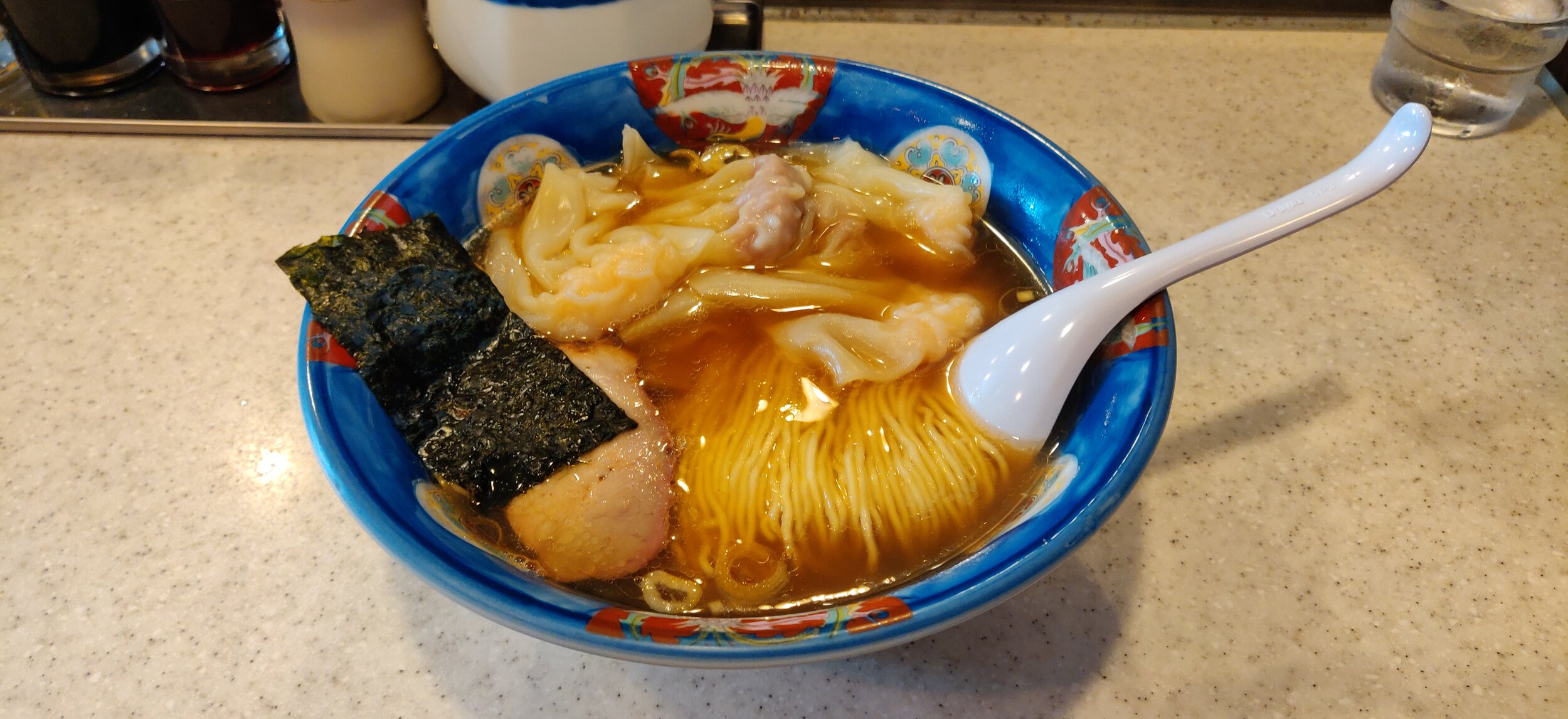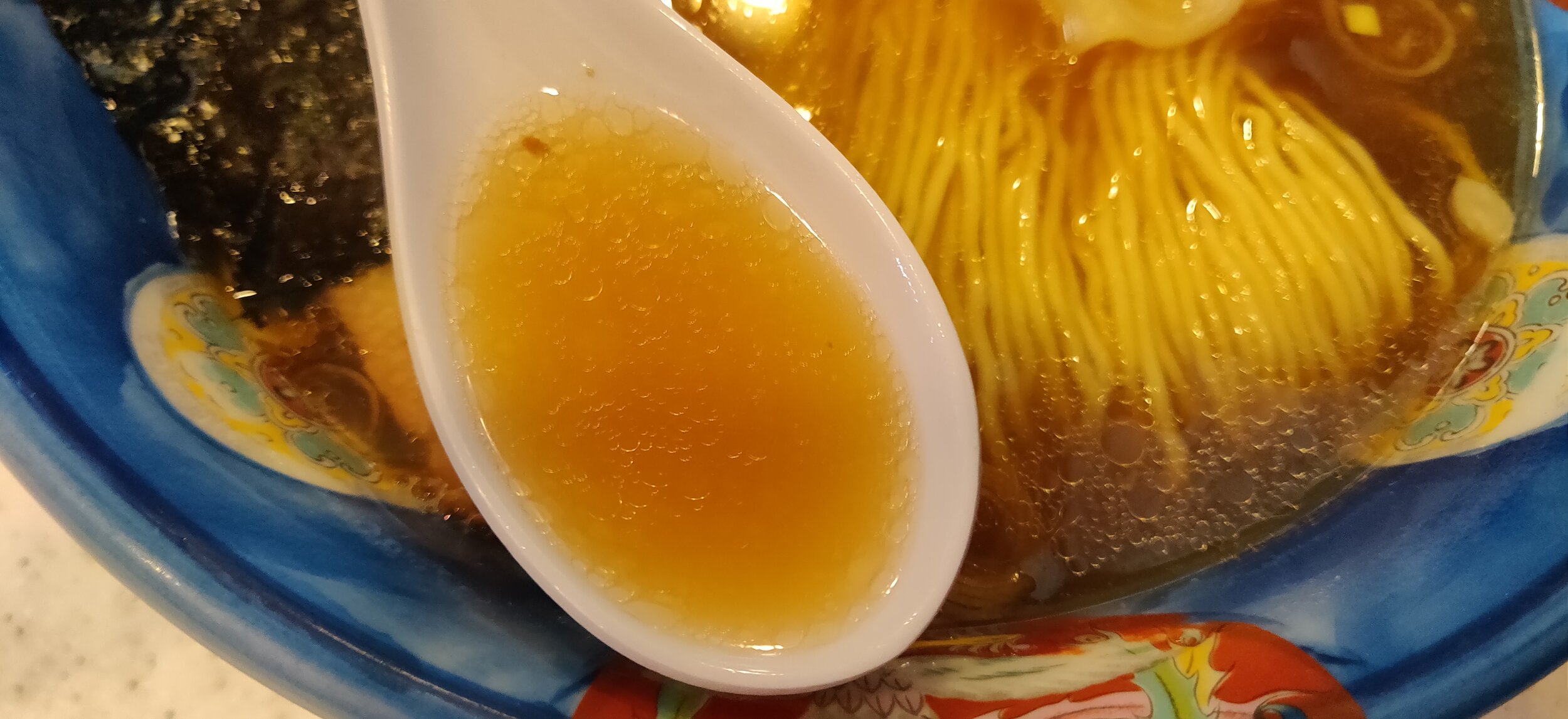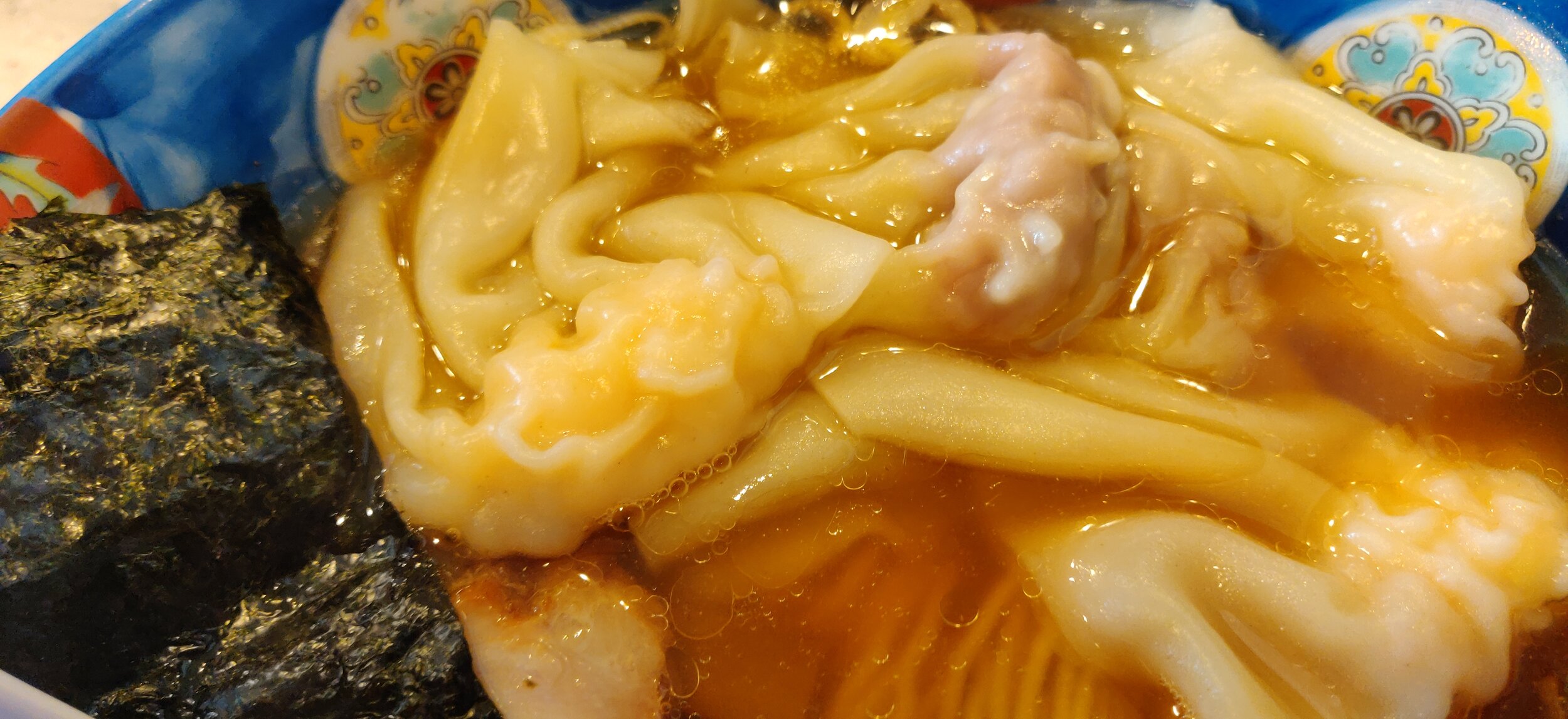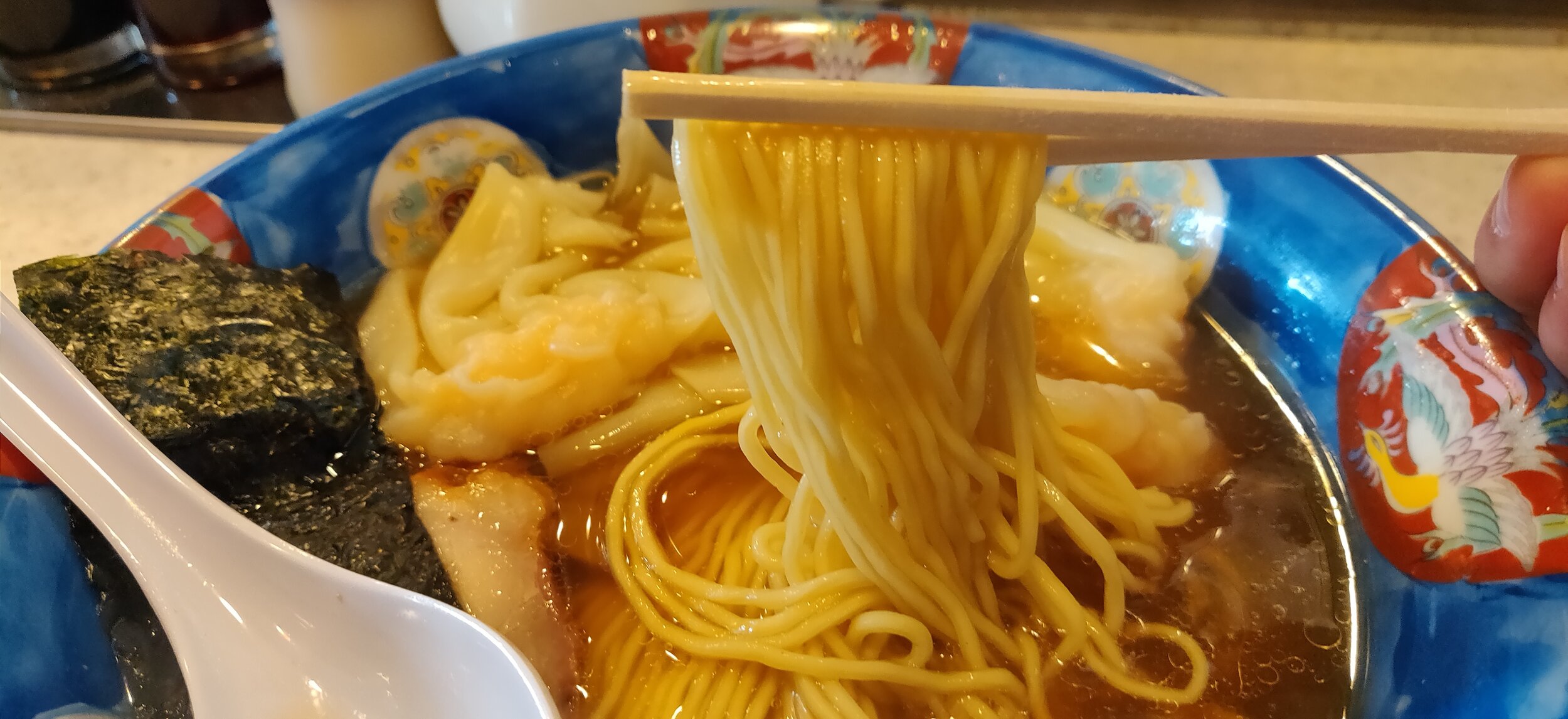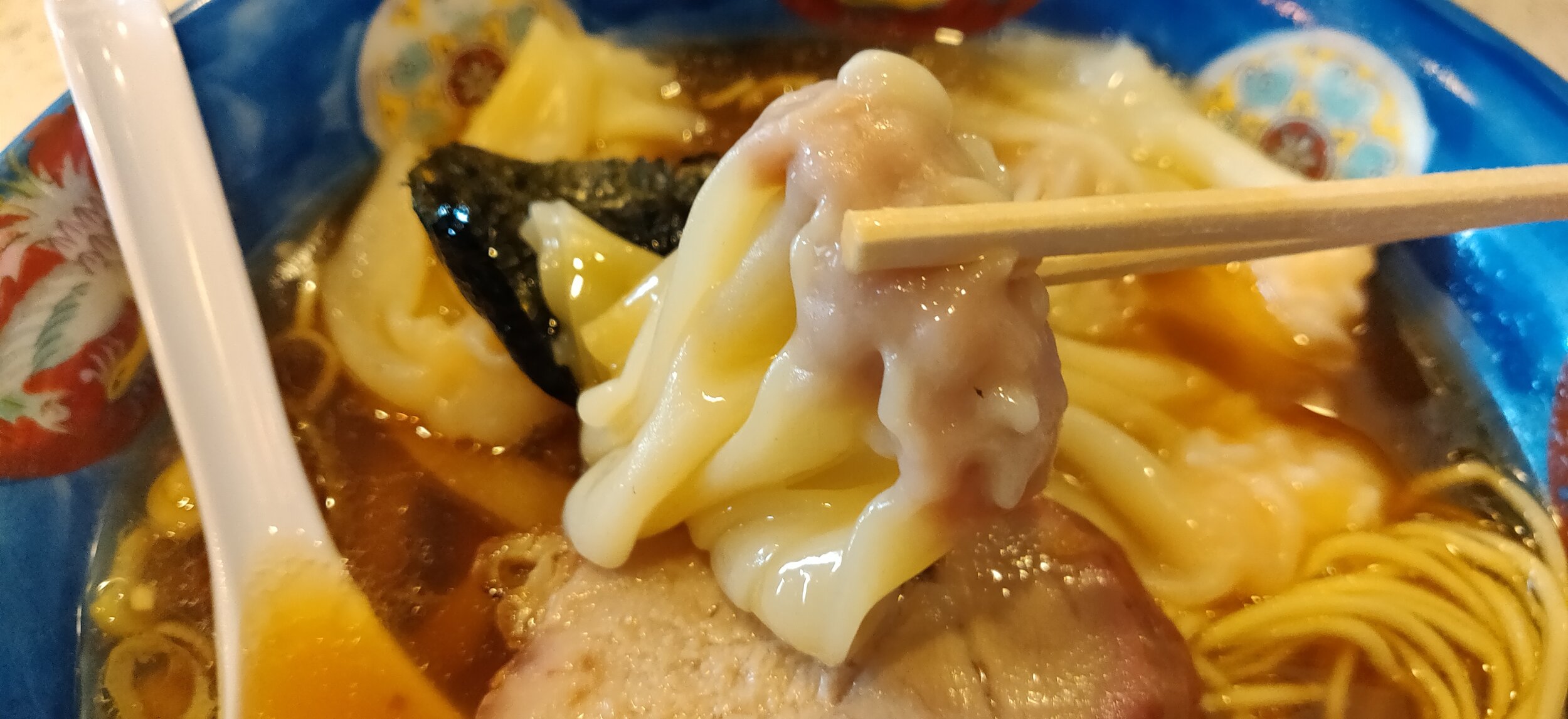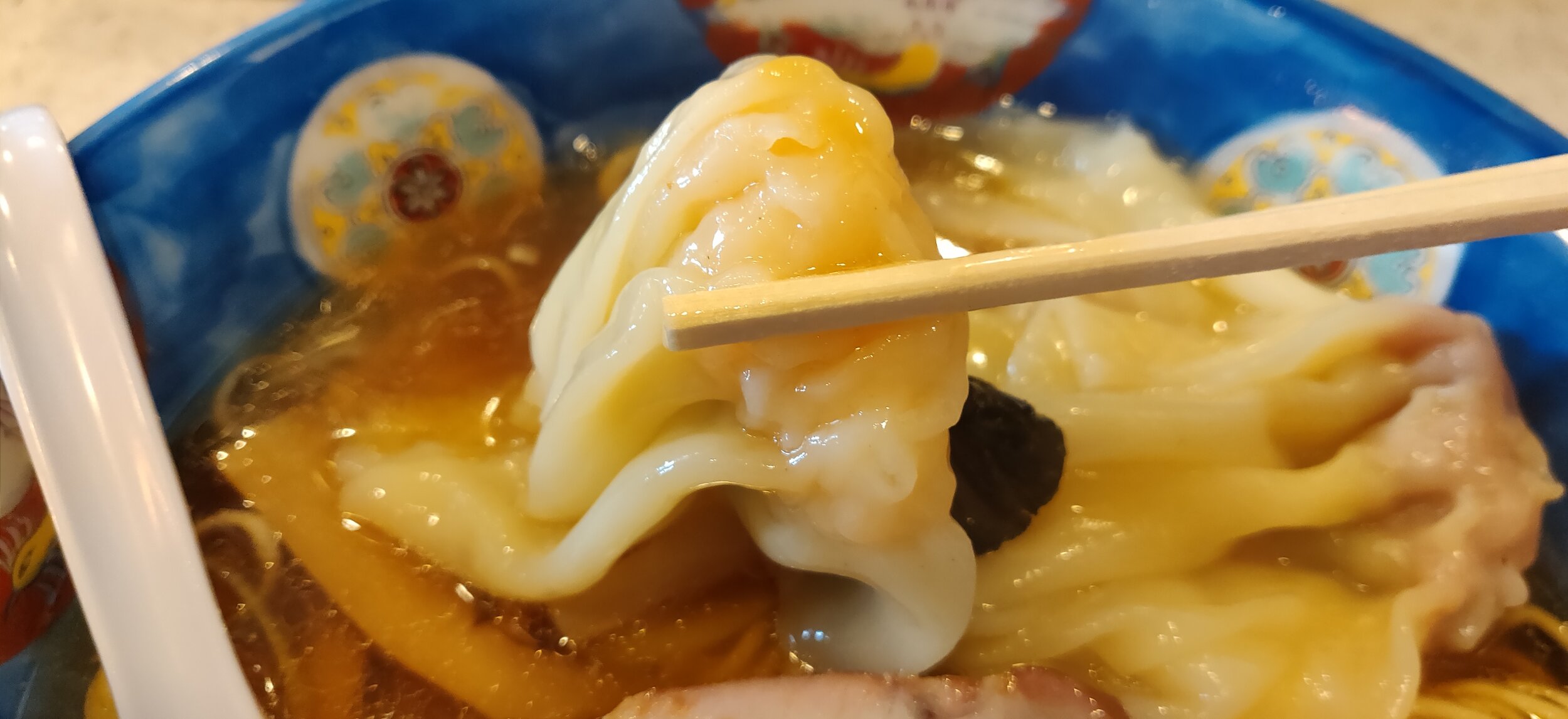Tantantei (たんたん亭), Old School Chuka Soba; Hamadayama, Tokyo
Origins of ramen in Japan is a bit muddled and you’ll find multiple theories regarding it’s history online. One point that is quite certain however is that ramen is originally a Chinese dish brought over by Chinese migrants at one point or another throughout Japan’s history. Due to the Chinese influence of the dish, many restaurants use the moniker “Chuka Soba”, or Chinese Noodles, as the name of their ramen. An even older, and somewhat racist moniker, that is still sometimes used by ramen restaurants, is “Shina Soba” stemming from the old term for China in Japanese. Tantantei still uses this outdated term for their ramen, which might deter some from visiting, but I can’t deny they serve up some amazing ramen. I’ll leave the decision up to you whether you want to visit, but I’ll just describe the shop and their ramen here so you have any and all information you might want to make your decision. While I’m not condoning the use of this outdated word, the term was quite common and the use was never moderated by any means, so if it does bother you, I definitely don’t think its a must visit shop by any means.
Tantantei is located just a short walk from Hamadayama station on the local Inokashira line. There isn’t a ton to do here at Hamadayama besides Tantantei, but the train line connects to major stations like Kichijoji, Shimokitazawa, and Shibuya so I definitely recommend just stopping by for ramen then exploring the other places along the train line when you’re done. Tantantei is open from 11:00 to 20:30 everyday except Tuesdays, but are known to close unannounced. I would check twitter and see if anyone had gone earlier that day and grabbed a bowl, but as they don’t have their own account, its rather difficult to predict if they end up not opening for the day. Anyways, if you do find yourself at Tantantei and they are open, they’ll seat you when one becomes available and you’ll make your order with one of the chefs behind the counter. Much like other ramen shops outside central Tokyo that I’ve reviewed recently, Tantantei has no English menu so I’ll go ahead and translate it for you here. I was seated right below the menu so my photo is a bit of a weird angle, but anyways, from top to bottom, the items are:
Shina Soba (Regular ramen; 770 yen)
Tsuke Soba (Tsukemen style ramen; 820 yen)
Won Ton Soup (Won Ton in soup; 920 yen)
Niku Won Ton Men (Ramen with pork won tons; 1070 yen)
Ebi Won Ton Men (Ramen with shrimp won tons; 1270 yen)
Mix Won Ton Men (Ramen with shrimp and pork won tons; 1170 yen)
Char Siu Niku Won Ton Men (Ramen with pork won tons and extra pork char siu; 1470 yen)
Char Siu Ebi Won Ton Men (Ramen with shrimp won tons and extra pork char siu; 1670 yen)
Char Siu Mix Won Ton Men (Ramen with mix won tons and extra pork char siu; 1570 yen)
Char Siu Men (Ramen with extra pork char siu; 1170 yen)
Oomori (Extra noodles; 150 yen)
Tamago (Egg; 100 yen)
Gyoza (Potstickers; 550 yen)
I ended up ordering the Mix Won Ton Men on my visit so I could sample a bit of everything from Tantantei and if it’s your first visit, I definitely recommend doing the same as their won tons, both shrimp and pork, are really well known in the ramen community. The ramen is quite voluminous so I don’t suggest grabbing more pork char siu, or getting extra noodles unless you have a hefty appetite. I wanted to order the gyoza, potstickers as well, but after finishing my ramen, I was glad I didn’t because I’m not sure if I could have finished it.
So pictured above is the Mix Won Ton Men which includes the two different types of won tons, a slice of pork char siu cooked Chinese style, a slice of dried seaweed as well as a bit of scallions, noodles and soup. One of the things I love about this shop is the use of this really beautiful blue ramen bowl. I’m not sure what makes it so appealing to me, but its so different from the simple white bowls that you typically see and I like the contrast it provides as a backdrop to the dish as a whole. Honestly though, the entire bowl is visually really pleasing with the noodles carefully folded in to place within the soup, the won tons gently placed over the top of the bowl with the pork char siu and dried seaweed as accents to the side. While the shop itself is quite old and to be honest, a bit run down, the dish itself is really elegant and the contrast of the two really caught me by surprise.
So as I do with almost all my ramen (besides tsukemen), I first went straight in with the soup. Broth here is quite unique, giving off tons of flavor due to its use of an array of ingredients such as dried fish, pork, chicken, kelp, and vegetables to name a few. At first you’ll get hit with the intense umami from the fish and kelp that makes your mouth pucker a bit like eating a fresh oyster, but it follows with the body that typically comes with the pork and chicken broth. A thin layer of oil coats your mouth bringing some fat components to the soup. Broth itself is a chintan and while it has a bit of emulsion to it, it’s still relatively clear. At the bottom you’ll find some remnants of gyofun, or fish powder, but for the most part, its a very clean soup. Seasoning tare is soy sauce based, but not the darker, richer blend that you might have experienced from some of the more popular shoyu ramen restaurants around Tokyo. The blend is a lot less intense and almost airy, which is essentially the style for some of the older chuka soba restaurants. The combination of the savory broth with hints of sweetness, with the salty old school shoyu really brings me back to the ramen shops I used to frequent with my dad as a child. While it is a tad oily, it doesn’t have a ton of fat content so you get a rather refreshing feeling of satisfaction than a heavy one. Noodles are on the thinner side and has a fair bit of alkaline and flour flavor to them. Each strand soaks up the soup perfectly and the combination of the two makes for memorable bites, each and every time.
For me, the highlight was the pork char siu and the two different won tons. I’ve long been a fan of Yakumo’s won tons and thought it to be the best in Tokyo, but the won tons here at Tantantei may have won me over. The two shops’ won tons have an eerie similarity to them, offering both a pork and shrimp variety with nice plumpness and meatiness to them. A bit of research and I found that the owner of Yakumo actually trained here at Tantantei explaining the resemblance of the won tons. What makes these two restaurants stand out with their won tons is how incredibly flavorful and balanced they are. The wrapper is just large enough to encase the filling without adding too much dough to the bite and the stuffing is seasoned perfectly as not to interfere with the gentle chintan soup. The pork is a bit stronger in flavor, with hits of soy sauce, mirin, and possibly vinegar, while the shrimp has the flavors of the ocean packed in with sea salts bringing out the full potential of the shrimp. I’m not sure which I like more, but I will say, these two shops are the cream of the crop of any ramen shops in regards to the won tons. After having tried the won tons here at Tantantei however, I realize why they offer just won tons in soup. I could easily come gain just to order the won tons and leave satisfied. The Chinese style pork char siu is also fantastic and can’t be ignored, with the smokiness of its cooking style permeating throughout the soup.
All in all this might just be my favorite ramen shop along the Inokashira Line, and that’s including both Kichijoji and Shibuya. The nostalgic flavors of the soup, absolutely fantastic bites of the noodles, unforgettable plumpness of the won tons, and the sweet-smoky aromas of the pork char siu really meshed to a perfect harmony in one bowl. While the trek might be daunting, and their old school, slight racist moniker may come as a deterrent, I do believe you’ll enjoy a bowl here at Tantantei if you decide to visit. While I won’t flat out say this is a must go restaurant, it deserves recognition as one of the oldest, most well regarded ramen shops in all of Japan.


